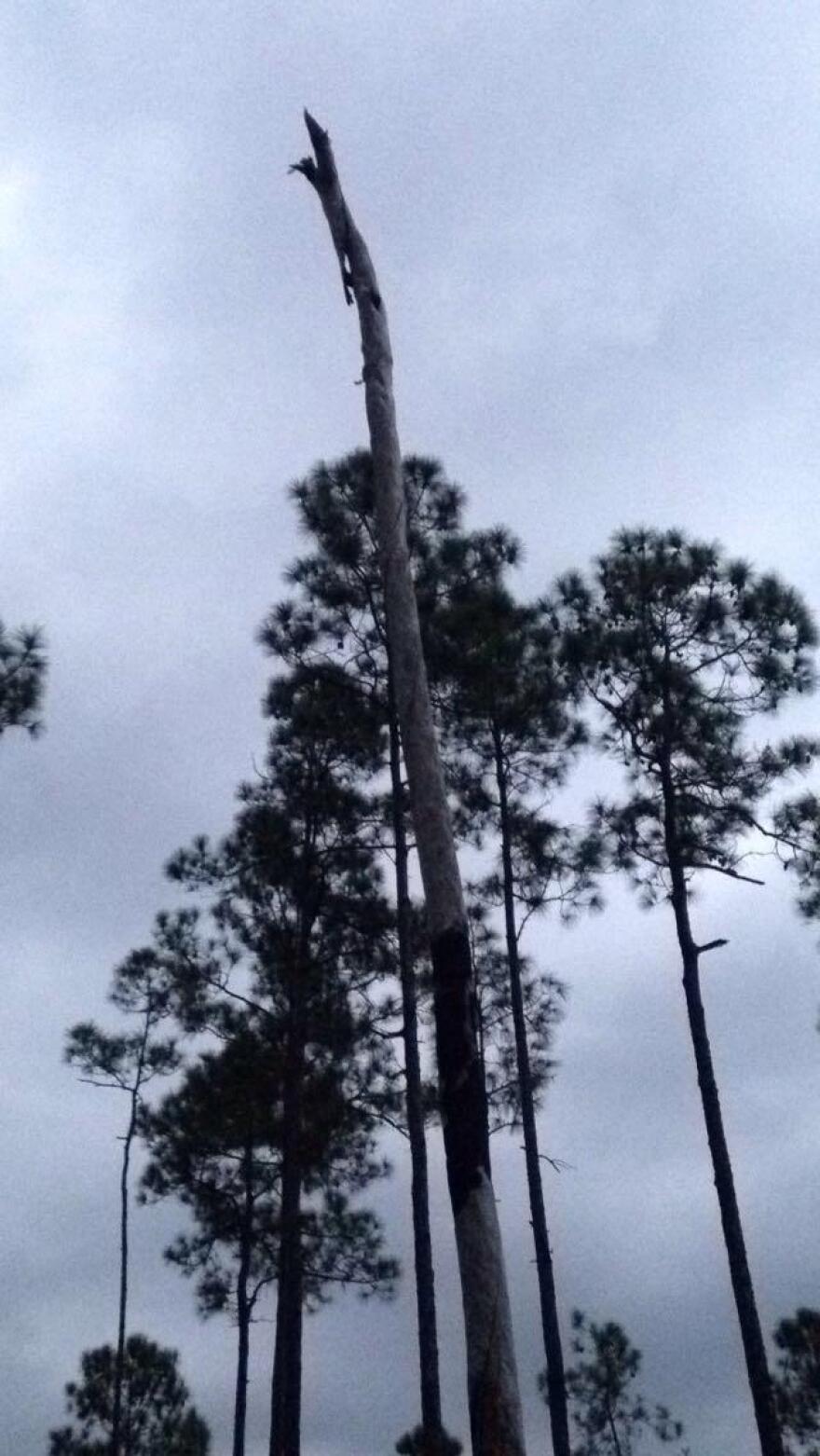Scientists are trying to learn more about a rare bat roost recently discovered in Immokalee. It’s rare because it belongs to the endangered bonneted bat, and it’s only the second of its kind in South Florida. U.S. Fish and Wildlife biologists journey into the Florida Panther National Wildlife Refuge to regularly monitor the bats.

Getting to the bonneted bat roost is a trek. Biologists, like Sarah Steele Cabrera, start with a 20-minute swamp buggy ride.
"I have almost unseated myself a few times driving a little too fast over some of these limestone cap rocks," said Steele Cabrera, laughingly.
She drove the buggy through pine flat woods and open prairies. So little is known about bonneted bats that even the most basic information - like counting them as they emerge from their roost after sunset – is vital. And that’s why scientists now come out to the roost twice a month to learn what they can by just watching.
Watch the video below to checkout the swamp buggy ride experience.
https://www.youtube.com/watch?v=OvZluvOK6xA&feature=youtu.be
"It sounds silly 'cause it's a really basic question, but we don’t know how large of a group that these bats live in so all we do is we go out there and we count bats. And that's about it," she said.
Steele Cabrera eventually parked the buggy. She and three other volunteer observers climbed out of the buggy and worked their way through cabbage palms, slash pines and saw grass. That’s how Steele Cabrera and a University of Florida researcher found the bat roost: on foot.
"We were just walking around in an area where we had seen and heard a lot of them and that was in July," she said.
The bat counters walked a couple hundred feet through the brush of an unofficial trail. The vegetation eventually disappeared. And all four observers looked up at a tall, thin “dead tree,” or "snag.”

"So this is our slash pine snag," said Steele Cabrera. "You can see it's been through some fire down at the bottom. I think the next really big storm we get through here might knock it down. There’s a pretty round hole toward the top of this snag and you can kind of make out like a dark streak of the bat guano dripping down out of that hole. And that's how you know bats use it."
"Guano" meaning bat feces, by the way. The roost is unique because the bats made it in a natural setting, said Mark Danaher. He’s a wildlife biologist with the panther refuge. He said the bonneted bat is one of the rarest species in Florida.

"It only occurs within five counties surrounding and including Collier County. But the fact that we found this roost is gonna allow us and other researchers to study this species and to gain more insight as to what types of habitats this species is utilizing," said Danaher.
Very faint high-pitched noises came from within the roost. The bonneted bat sounds got louder and more frequent as the sun began to set.
"It's not a time that most people, myself included, tend to be out in the woods," said Steele Cabrera. "It's a really nice way to watch the forest shift from day time to night time-- really listen to all the different insects and the frogs, start hearing owls."
As the green tree tops transitioned into black silhouettes, the bat sounds got louder. About 25 minutes after sunset, the bats bursted out of the hallow tree top. Large bats flew out and swooped down like paragliders-- gone in an instant to feed on mosquitoes through the night.
The 15 of them wouldn't return until sun rise. But even though they left, there were still some sounds coming from the snag. Steele Cabrera thinks they’re bonneted bat pups. She sat on the ground with her back against a tree. She continued to look up and take notes.
"I’ve never worked with bats before so going from having never really seen a bat up close to getting to be a part of something really exciting for the scientific community is great and really unexpected," she said.

Steele Cabrera will go back in a couple weeks to witness the emergence again. She hopes this information will help to manage and protect this unique bat species.








